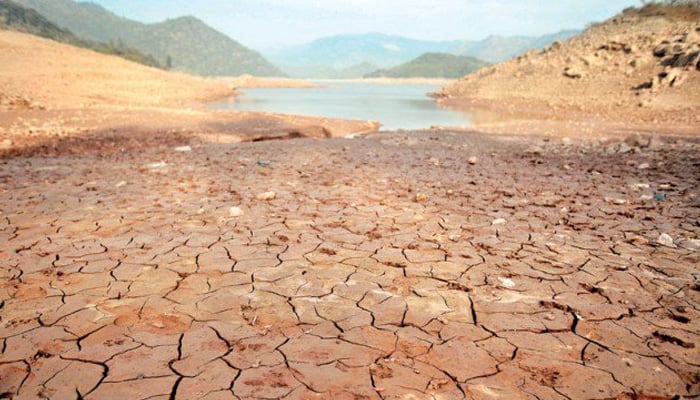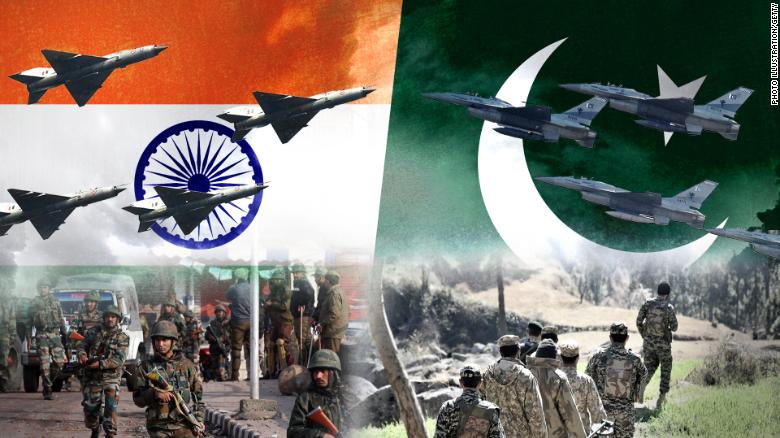Over 10 years ago, Christian Parenti brought up quite a tense conflict between India and Pakistan in his book “Tropics of Chaos”. And even though the book itself was published in 2011, the roots of this rivalry go way deeper than one might expect.
Everything started because of the countries’ need for water – a region called Kashmir was rich with alluring rivers, and since Pakistan’s agriculture almost entirely (in 90% of the cases) was dependent on rivers, it was crucial for them to add Kashmir to their territories ("Tropics of Chaos", Christian Parenti). Originally, Kashmir was mostly inhabited by Muslim people but was ruled by a Hindi governor, so the situation in the region was far from being stable, and the state wanted to join neither Pakistan nor India. However, Pakistan decided to act - in October 1947 they sent the troops to take over the region. India didn’t want to give up such a water-rich asset, sending their warriors as well - and that’s how the rivalry started. As a result, after hundreds and hundreds of dead soldiers, the Line of Control was established, but no final border was in place ("A History of Kashmir Conflict"). However, this was just the beginning.
Everything started because of the countries’ need for water – a region called Kashmir was rich with alluring rivers, and since Pakistan’s agriculture almost entirely (in 90% of the cases) was dependent on rivers, it was crucial for them to add Kashmir to their territories ("Tropics of Chaos", Christian Parenti). Originally, Kashmir was mostly inhabited by Muslim people but was ruled by a Hindi governor, so the situation in the region was far from being stable, and the state wanted to join neither Pakistan nor India. However, Pakistan decided to act - in October 1947 they sent the troops to take over the region. India didn’t want to give up such a water-rich asset, sending their warriors as well - and that’s how the rivalry started. As a result, after hundreds and hundreds of dead soldiers, the Line of Control was established, but no final border was in place ("A History of Kashmir Conflict"). However, this was just the beginning.
 |
| (https://images.app.goo.gl/SGm2KMiZdx2DFYjV6) |
At the same time, climate change was also taking part in this conflict – it was simply making everything worse ("Tropics of Chaos", Christian Parenti). Pakistan reported dangerous “over-exploitation of groundwater” and a decline in rainfall. Due to extreme environmental changes, Pakistan is losing water which is already such a scarce resource for the nation. If this trend continues – and it will if humanity doesn’t decide to act upon it – Pakistan’s entire economy will collapse.
 |
| (https://images.app.goo.gl/VunRFJA8BkQJD7w2A) |
Citizens of divided Kashmir are not living their best life as well. India-administered side of the region has enacted lockdown, leaving thousands of people detained and without connection to the outside world. Other than that, an attack on an Indian convoy in February 2019 also resulted in the deaths of at least forty soldiers which was considered “the deadliest attack in Kashmir in three decades”. The countries continue to fight, conducting airstrikes on each other’s territories, shooting down military aircraft, and capturing hostages (Global Conflict Tracker).
 |
| https://images.app.goo.gl/n69qhrKLokuLG7ry9 |
This was such a fascinating read. It truly is awful what the conflict between Pakistan and India has come to. It's scary to think that even a nuclear could erupt from this. This really shows that climate change is a serious matter and something that needs to be dealt with properly. Great post.
ReplyDeleteThe fact that water scarcity and the greediness of holding resources against each other is truly awful. The fact that we as humans could keep something so valuable as water away from other people is disappointing to say the least. To add salt to the wound, we throw nuclear freaking weapons into the mix. Truly sad! Nice post, Anna Maria.
ReplyDeleteSolid! I agree with your conclusion! We do need to act. Chaos from dwindling water resources and intense animosity with the neighbor is a recipe for world war or an opportunity for world cooperation. Thank you for pointing out the need for world action. I hope more recognize opportunity, we are running out of those.
ReplyDeleteIt still continues to amaze me that countries cannot figure out how to work together. And therefore haven't been able to figure out that the only way to survive the climate crisis is to work as a team. Fighting like this does nothing but make things worse.
ReplyDeleteI really enjoyed reading your blog post. Something I found interesting was that refugees of both Pakistan and India are travelling to the opposing country. Hindu and Sikh refugees are moving from Pakistan to to India, and Muslim refugees are moving from India to Pakistan. Other than that, the nuclear war aspect scares me. Hopefully the two countries never resort to that because it would surely kickstart the end of the modern world.
ReplyDeleteYou're an awesome writer, Anna-Maria! I loved reading your post.
ReplyDeleteIt's difficult for me to understand why different countries fight so much. Why can't there be more sharing culture rather than violence?